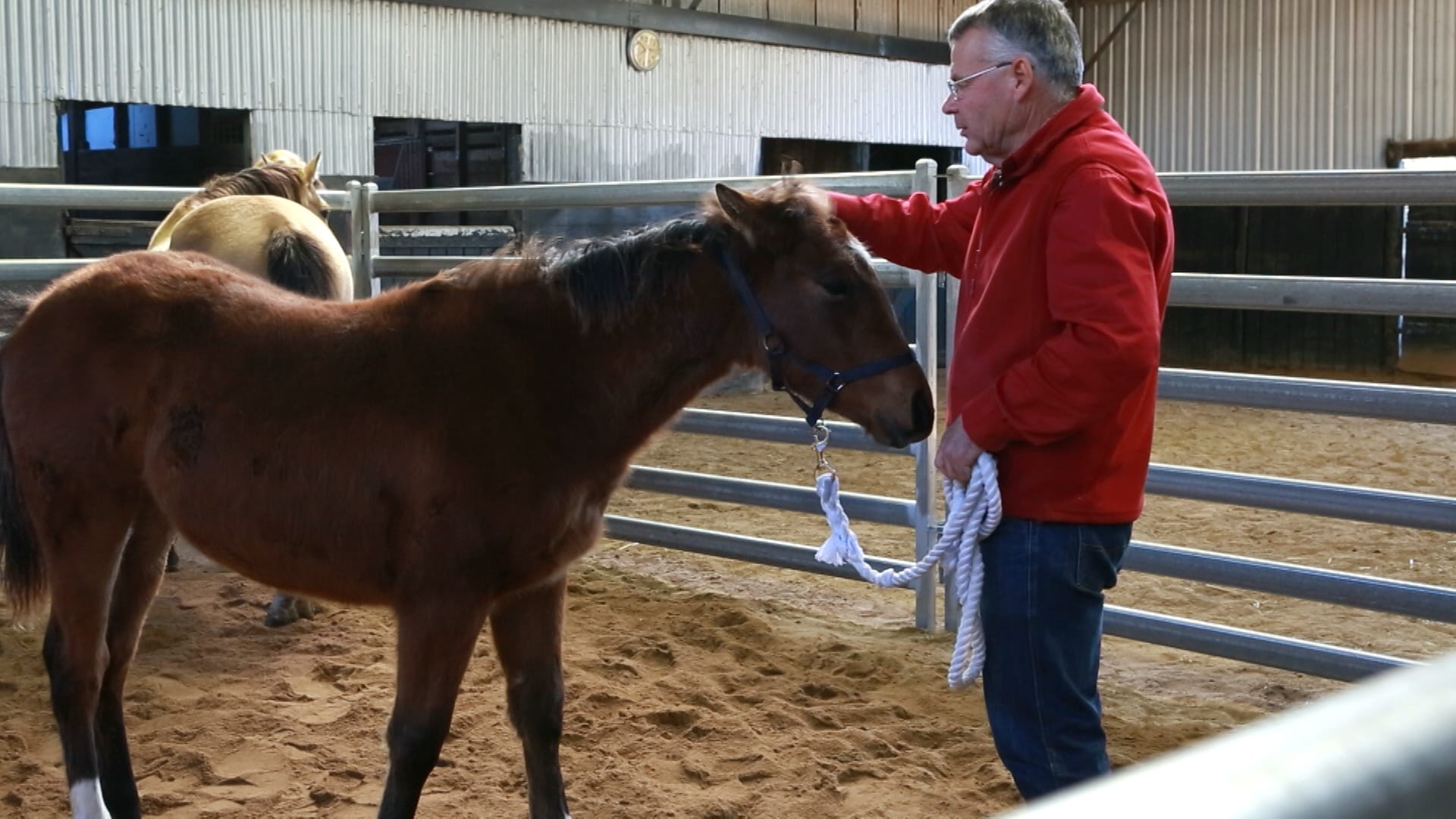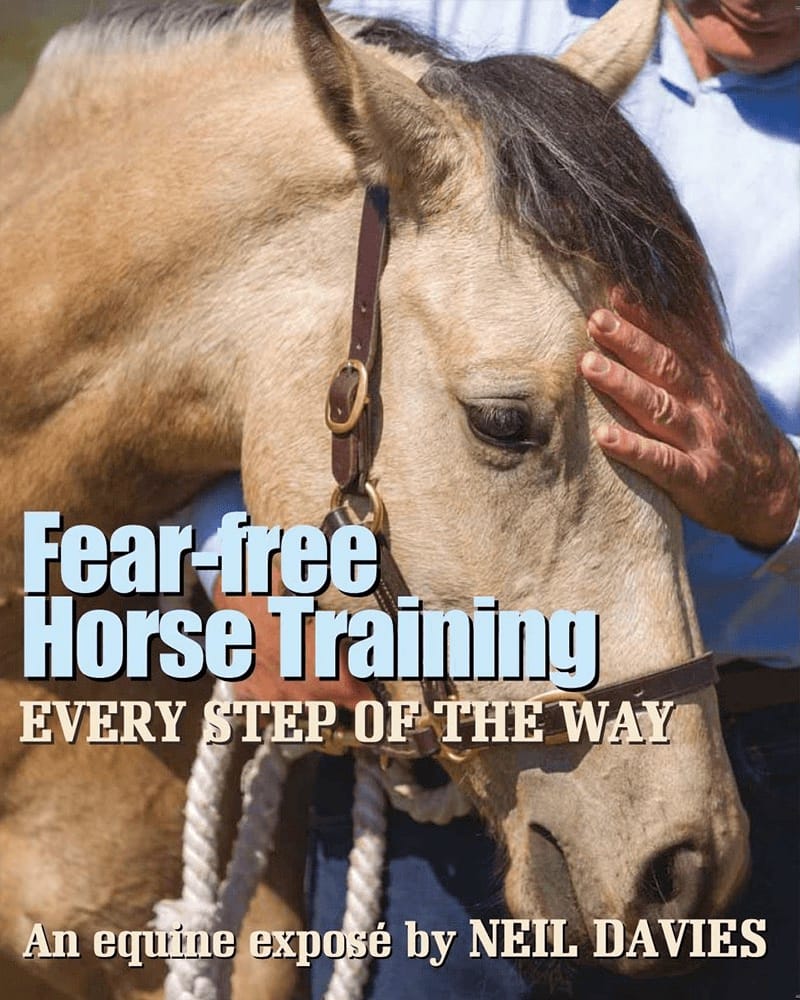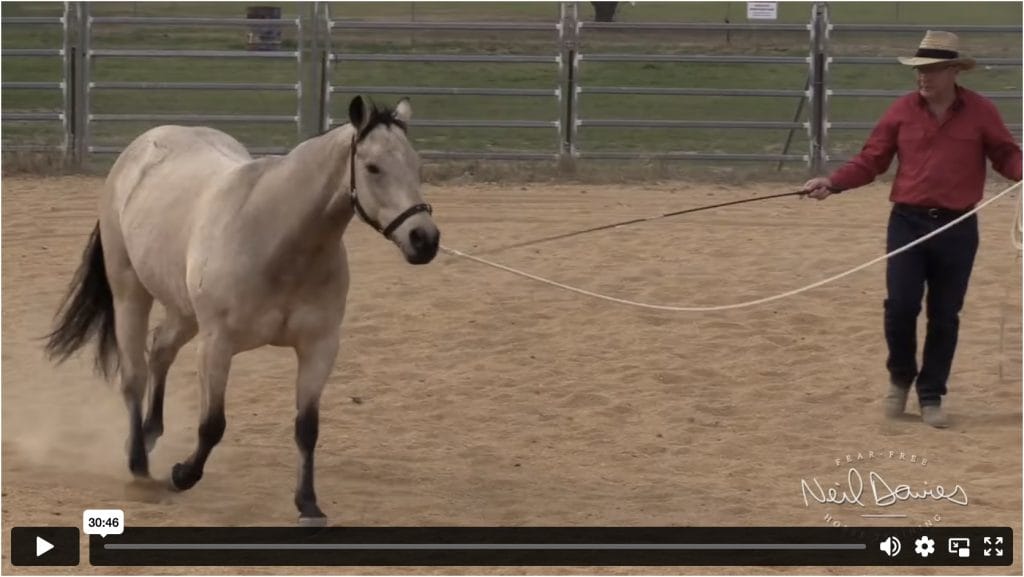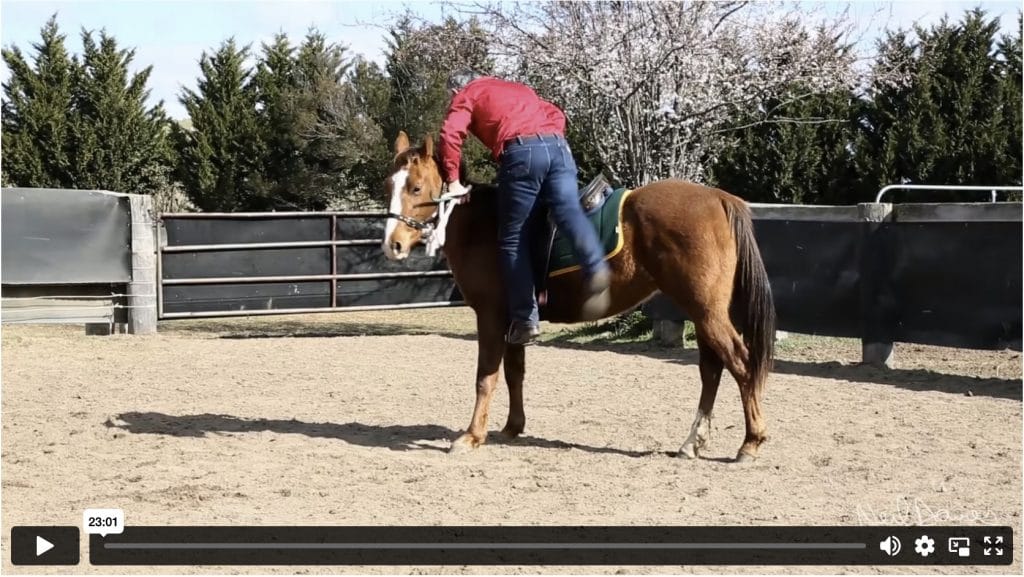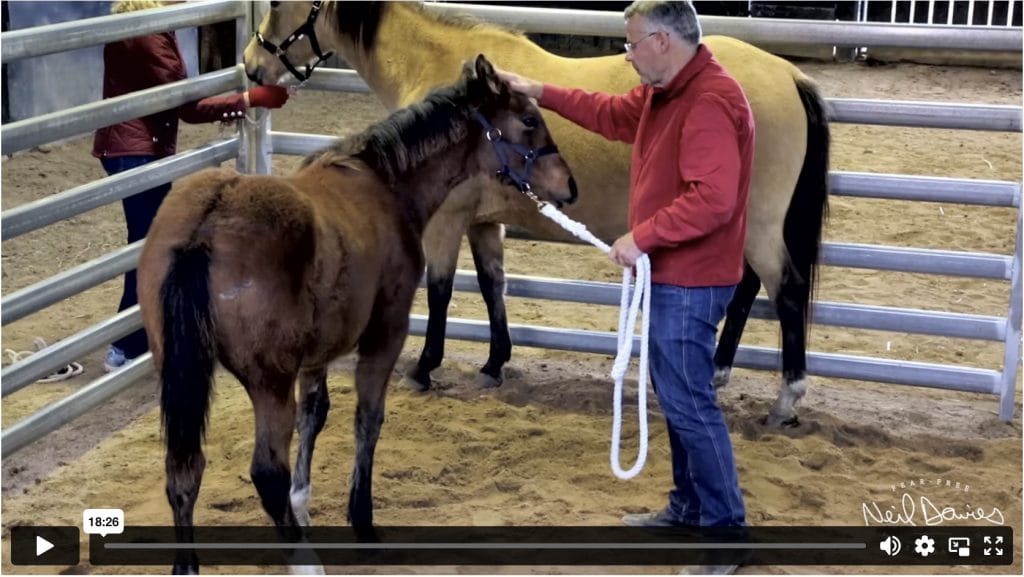Whenever you work with an unhandled horse or foal, the first thing you must do is get a rope around his neck.
Without a rope, the horse can run away at any time.
And the more frightened the horse is, the more he’ll run.
Some horses will run to the point of exhaustion rather than allow you to approach them.
Without a rope, all you’ll teach the horse is how to avoid you when he’s worried.
Even in a small area you can spend hours trying to catch a worried horse if you don’t have a rope on him.
At first, the rope is used to teach the horse to stand with his head towards you, rather than step away.
You can then approach the horse and rub his neck and show him you’re not going to hurt him.
This can be achieved in a short space of time.
The rope must never be used to pull the horse around or to drag him here or there.
It’s simply used to teach the horse to stand.
When the horse accepts you rubbing his head and neck, the rope can be replaced with a headstall and lead.
Again, the headstall and lead must never be used with force.
Even when you pull lightly on a horse’s headstall, you’re applying unpleasantness.
Your horse wants to avoid being pulled with the headstall and so he learns to respond to a light touch.
When the horse becomes more confident, a long stick can be used to apply pressure at his rear end to teach him to move forward.
I always use a six-foot-long stick to touch a horse’s rump when I stand in front of him.
See the steps to get your foal relaxed and confident my Foal Handling Online Clinic
Whenever you pull on the headstall or touch your horse with the long stick, always start with the lightest touch and build up gradually until your horse responds.
Your horse will learn to avoid being tapped with the long stick by moving where you ask, when you ask.
When you work in this way, you can reinforce your lessons and your horse will be relaxed and confident.
Many trainers say they “do the same” by using a flag on a stick.
They flap a flag on a stick at a frightened horse and say they’re getting him ‘used to it’ and ‘desensitising him’.
Sometimes the horse is expected to run round and round.
At other times, the horse is expected to stand still while the flag is flapped.
Here’s what really happens:
When you flap a flag at a horse, you’re starting with the maximum amount of pressure instead of the minimum amount.
The horse will have no idea why he’s being harassed in this manner and he’ll have no idea how to relieve the fear and worry of having a flag waved at him.
Hitting or chasing a horse with a flapping flag is not reinforcing any lesson.
Neither is it teaching your horse anything, except to be frightened and confused.
No matter what story you’re told, a flapping flag on a stick should never be used on any horse.
See the steps to get your foal relaxed and confident my Foal Handling Online Clinic

